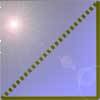Skip over navigation


Or search by topic
Number and algebra
Geometry and measure
Probability and statistics
Working mathematically
Advanced mathematics
For younger learners
Triangles All Around
Age 7 to 11
Challenge Level 





- Problem
- Getting Started
- Student Solutions
- Teachers' Resources
How will you keep track of the different triangles you have created?
How are you deciding what is the same and what is different?
What do you know about the angles in a triangle?
It might help to mark the centre of the circle and to draw in some radii.
How are you deciding what is the same and what is different?
What do you know about the angles in a triangle?
It might help to mark the centre of the circle and to draw in some radii.
You may also like
Cutting Corners
Can you make the most extraordinary, the most amazing, the most unusual patterns/designs from these triangles which are made in a special way?
Bracelets
Investigate the different shaped bracelets you could make from 18 different spherical beads. How do they compare if you use 24 beads?

